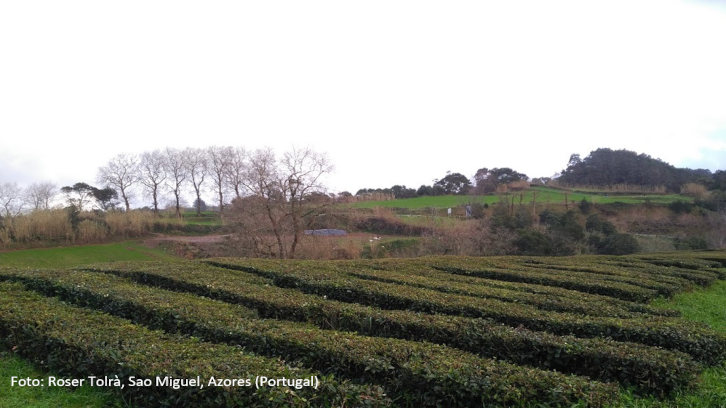Aluminium alters mineral composition and polyphenol metabolism in leaves of tea plants

Green tea infusions have positive health effects. The dried leaves are rich in antitumor and antioxidant bioactive compounds that are released when in contact with hot water. However, in the plant from which they come, Camellia sinensis, the availability of these compounds depends on factors such as soil pH, which determines the amount of aluminum in its leaves. The Plant Physiology research group evaluated the effects of this heavy metal on the leaves of the tea plant. The results conclude that the acidification of the soil increases its availability in leaves, which therefore decreases the plant's beneficial health properties.
Tea plants (Camellia sinensis) can hyperaccumulate and tolerate high leaf concentrations of aluminium (Al). Al-hyperaccumulating species are almost exclusively either woody Angiosperms or ferns growing on acid soils with low phosphorus and calcium availability, typical for tropical environments.
The quality of tealeaves and the positive health effects of their infusion depend on the leaf concentrations of both polyphenolic substances and mineral elements. Usually, Al-hyperaccumulators present high leaf concentrations of organic acids (OAs) and phenolic compounds. Organic acids are strong Al-ligands involved in both the detoxification and transport of Al in plants. Al-excluder species commonly exudate oxalate, malate and/or citrate to detoxify Al in the rhizosphere or inside root cells. Roots of tea exudate oxalate in response to Al, and citrate that seems to be the main ligand for the long-distance transport of Al in tea.
Also polyphenolic compounds can play a role both in metal binding within the plant cells and in defense against oxidative stress due to their antioxidant properties. High interest in tea polyphenolic substances arises from the multiple beneficial health effects ascribed to these substances. Green tea prepared by infusing dried leaves of Camellia sinensis is especially rich in bioactive compounds as catechins, especially EGCG (epigallocatechingallate) and ECG (epicatechingallate) which are highly abundant in hot water extracts and appear to be the major anti-tumorigenic and anti-oxidant substances.
Photo: Camelia sinensis flower and leaves detail. Author: Roser Tolrà, Lab FV, UAB
This study explored the influence of Al supply on these leaf components under low and optimal phosphorus (P) availability. Seeds of tea (Camellia sinensis (L.) O. Kuntze) plants were collected from the garden of the Tea Research Station in Fuman (Guilan Province, Iran), cultured in nutrient solution (pH 4.0) and differential Al and P treatments were started (0 or 200 µM AlCl3 in combination with the control P supply or extra P supply of 50 µM in a growth chamber under controlled environmental conditions.
Multifactorial analysis revealed a negative influence of leaf Al on magnesium (Mg), phosphorus (P), boron (B), and manganese (Mn) leaf concentrations. Contrastingly, these essential mineral nutrients were positively related to leaf galloylated catechins, as was iron (Fe) after short-term exposure (24 and 96 hours). RT-qPCR analysis also revealed upregulation of galloylation-related genes by substrate acidification both in old and young leaves. Only the extremely high Al accumulation in old leaves activated genes involved in biosynthesis of galloylated catechins, while in young leaves the lower Al leaf concentrations activated genes involved in anthocyanin accumulation.
In conclusion, low pH and enhanced Al availability to tea plants have a strong influence on the polyphenolic pattern of tealeaves and therefore may alter both the leaves’ antioxidant properties and their ability to bind Al and Fe in non-toxic form.
Plant Physiology Unit, BABVE Department
Faculty of Biosciences
Universitat Autònoma de Barcelona
References
Tolrà R, Martos S, Hajiboland R, Poschenrieder C. Aluminium alters mineral composition and polyphenol metabolism in leaves of tea plants (Camellia sinensis). J Inorg Biochem. 2020 doi: 10.1016/j.jinorgbio.2019.110956.


